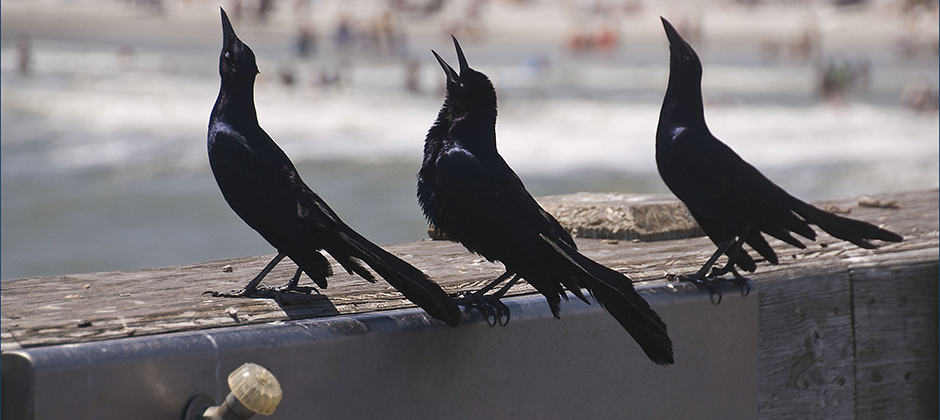Share this article
Urbanization changes birds’ migratory behavior
Warmer temperatures and food resources — from bird feeders to trash cans — in urban areas change the migratory behaviors of bird species, even resulting in more resident populations, according to new research.
“This showed that urbanization can have an effect on migratory behavior of birds,” said lead author Anne-Sophie Bonnet- Lebrun, now a postdoctoral researcher with the British Antarctic Survey who conducted the research as a PhD student at the University of Cambridge. “It’s quite interesting to realize the effect we can have on birds.”
In the study published in Conservation Biology, researchers used bird banding data on 12 North American partially migratory species — ones where individuals in a population may or may not choose to migrate — to determine if there were any patterns for birds in different areas including cities.
“The reason we used banding data was to determine if they migrate or not,” Bonnet-Lebrun said. “With the banding data, people basically capture the birds and put a unique ring on them in the summer, and then when you recapture it in the winter you know whether the bird has migrated or not.”
Her team found four species — European starlings (Sturnus vulgaris), American goldfinches (Spinus tristis), purple finches (Haemorhous purpureus) and evening grosbeaks (Coccothraustes vespertinus) were more likely to remain in their breeding range. Eight species, including American goldfinches, American robins (Turdus migratorius), Brown-headed cowbird (Molothrus ater), common grackles, (Quiscalus quiscula) European starlings, house finches (Haemorhous mexicanus), purple finches and white-throated sparrows (Zonotrichia albicollis) remained in their wintering areas. And urbanization increased the likelihood that nine of these bird species would stay put year-round.
“Our results thus indicate that bird migratory strategies will respond to global change — in climate and land use — and indeed are already doing so,” they wrote.
Temperatures tend to be higher in cities, Bonnet-Lebrun said, and the availability of bird feeders, trash and other food sources makes it easier for birds to avoid the energetic costs of migration, whether from their breeding range or their wintering range.
That could have mixed results for the birds. Even garden feeders may not provide the best nutrients, she said, and they can increase the spread of disease when birds congregate around them.
The next step is studying these changes in behaviors on a more local scale in order to influence management and conservation, Bonnet-Lebrun said. Another direction would be to study migration behaviors of even more species and in finer detail. “We have the big picture,” she said. “But we don’t know for each of the species what drives the effect.”
Header Image: Birds like these common grackles are more likely to stay year-round in cities, benefiting from birdfeeders, trash and milder winters. ©Ron Cogswell








